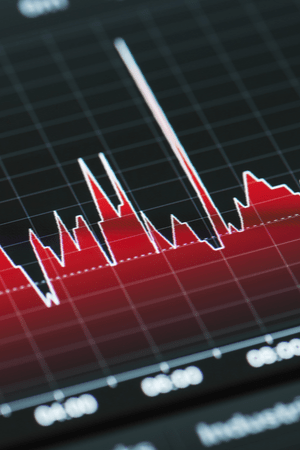
Strategies for Day Trading
Day trading is the buying and selling of a financial instrument within the same trading day or even multiple times during the day. Profiting from small price fluctuations can be very lucrative if done correctly. However, it can be a dangerous game for beginners or investors who do not adhere to a well-thought-out strategy. Furthermore, not all brokers are suitable for the high volume of daily transactions by traders. Nevertheless, some brokers are specifically designed for day traders.
Knowledge is power
In addition to some knowledge of basic trading procedures, day traders should be aware of the latest news and events that affect the markets — What will interest rates do? What does the economic outlook look like? Etc. Therefore, do your homework. Make a list of stocks you would like to trade and educate yourself about these companies and the markets in general. Keep yourself updated on business news and visit reliable financial websites.
Set aside money
Determine how much capital you are willing to risk per trade. Many successful day traders risk less than 1% to 2% of their account per trade. If you have a trading account of $40,000 and you are willing to risk 0.5% of your capital per trade, your maximum loss per trade is $200 (0.005 x 40,000). Use excess capital to trade that you can afford to lose in the event of a loss. Remember, it can happen.
In addition to money, also set aside time
Day trading requires your time. That’s why it’s called day trading. You’ll even lose a large part of your day. So don’t consider day trading if you have limited time. The process requires the trader to monitor the markets and spot opportunities that can arise at any time during the trading day. Acting quickly is essential.
Start small
As a beginner, focus on no more than 1 or 2 companies’ stocks during a session. Following and spotting opportunities and possibilities is easier with just a few stocks . It has become increasingly common to trade in “fractional shares”, which are, as the name suggests, smaller parts of a single share. This allows you to specify that you want to use a specific, smaller amount to invest. This means that, for example, Apple shares are trading at $250 and you only want to buy $50 worth of Apple shares, many brokers now allow you to buy one-fifth of a share.
Avoid Penny Stocks
You’re probably looking for deals and low prices. However, stay away from penny stocks . These are often illiquid stocks with very little chance of making a big profit. Stocks that are listed for less than $5 per share are delisted from major exchanges and are only available over-the-counter. Unless you see a real opportunity and have done your research, stay away from these securities.
Time your transactions
Many orders placed by investors and traders are executed immediately when the markets open in the morning, which contributes to price volatility. An experienced player can recognize these patterns and profit from them. For novice day traders, it may be wiser to observe the markets without trading for the first 15 to 20 minutes. Volatility usually levels off halfway through the trading day, and then starts to increase again as the end of the day approaches. Although peak hours on the markets offer many opportunities, it is safer for beginners to avoid them.
Limit losses with limit orders
Choose what type of orders you place for your trades. Will you use market orders or limit orders? When you place a market order, it will be executed at the best available price at that time — so there is no price guarantee.
A limit order, on the other hand, guarantees the price, but not the execution. Limit orders help you trade with more precision, where you determine a price (not unrealistic but feasible) at which the securities will be bought or sold. An advanced and experienced day trader can also use the addition of options to his/her strategy to hedge his/her own positions.

Be realistic about the profits
A strategy does not always have to make a profit to be profitable. Most traders only make a profit on 50% to 60% percent of their trades. However, they make more on their profits than they lose on their losses. Make sure that the risk on each trade is limited to a specific percentage of your account and that your entry and exit strategy is clear and written down.
Keep calm
There are plenty of times when the markets will test your nerve. As a day trader, you will have to learn to control greed, hope and fear. Decisions should be made based on logic, not emotion.
Stick to the plan
Successful day traders need to act fast, but not think fast. Why? They have developed a trading strategy in advance, along with the discipline to stick to it. Instead of chasing profits, it is important to stick to your formula. Don’t let emotions get the better of you by giving up your strategy. Day traders have a common motto: “Plan your trade and trade your plan.”
Getting started with day trading?
Are you excited about day trading after reading this article? Then take a look at our range of CFD brokers , because these brokers work with leverage they are suitable for day trading. In this way you can have big consequences with a small investment. Please note, CFDs have an increased risk.
82% of retail investor accounts lose money when trading CFDs with this provider. You should consider whether you can afford to take the high risk of losing your money.
